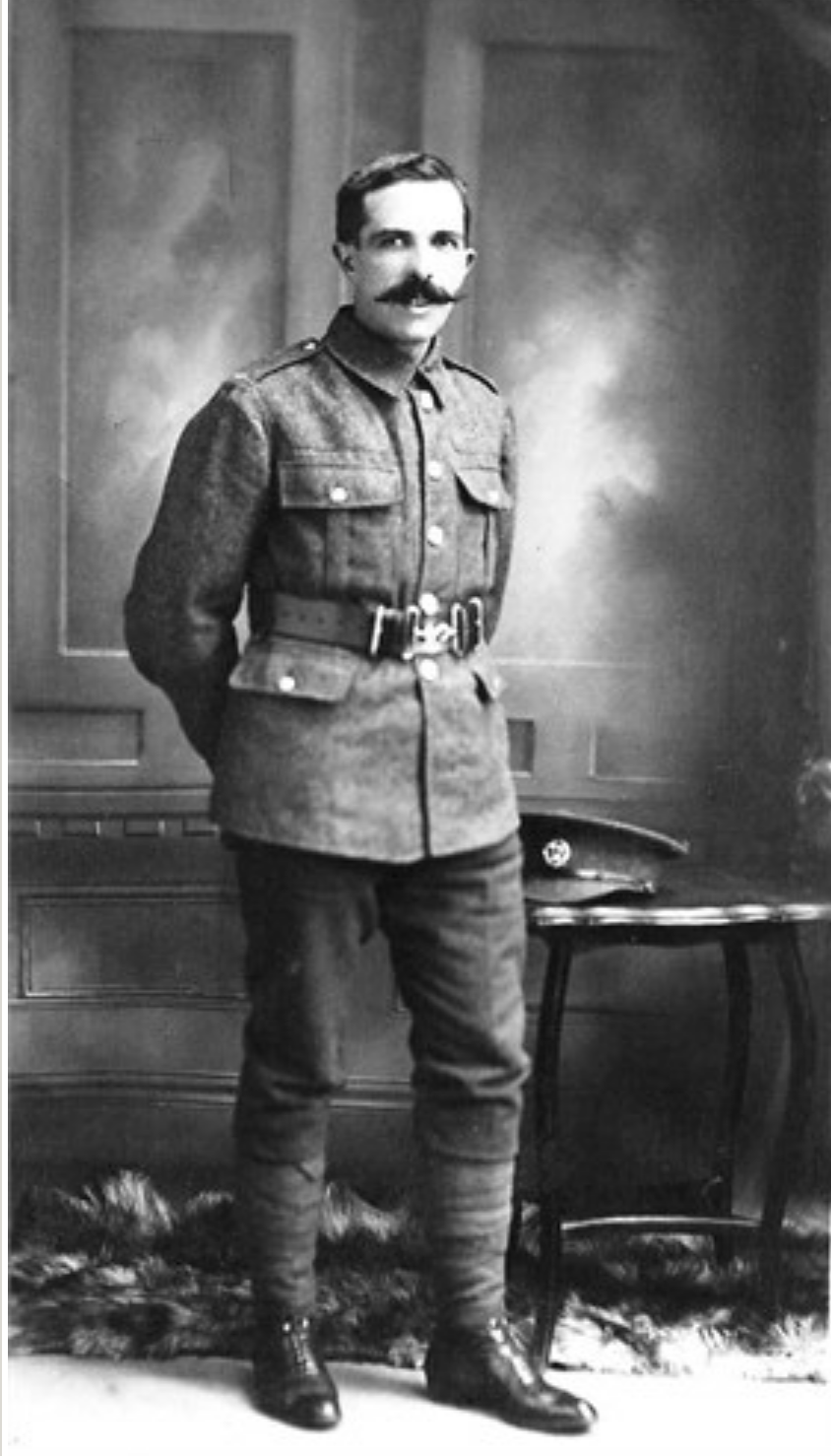Pte
Theodore Algernon Drudge
Informationen zu Geburt
|
Geburtsjahr: 1883 |
|
Geburtsort: Ventnor, Isle of Wight, Hampshire, England, Vereinigtes Königreich |
Allgemeine Informationen
|
Beruf: Upholster |
Informationen zum Armeedienst
|
Land: England, Vereinigtes Königreich |
|
Truppe: British Expeditionary Force |
|
Rang: Private |
|
Dienstnummer: 220175 |
|
Einberufung ort: Newport, Isle of Wight, Hampshire, England, Vereinigtes Königreich |
|
Einheiten: — Princess Charlotte of Wales’s (Royal Berkshire Regiment), 8th Bn. (Letzte bekannte Einheit) |
Informationen zu Tod
|
Sterbedatum: 16/11/1917 |
|
Sterbeort: Tournant Farm, Belgien |
|
Todesursache: Im Kampf gefallen |
|
Alter: 34 |
Gedenkstätte
|
Tyne Cot Memorial Tafel: 105 A |
Auszeichnungen und Orden 2
|
British War Medal Medaille |
|
Victory Medal Medaille |
Punkte von Interesse 2
| #1 | Geburtsort | ||
| #2 | Einberufung ort |
Meine Geschichte
Private Theodore Algernon Drudge served in the Princess Charlotte of Wales’s Royal Berkshire Regiment 8th Battalion, part of the 1st Brigade of the 1st Division. On November 15 1917, after the main campaign had ended, the Battalion took over front-line trenches near Poelkapelle from the 2nd Brigade and on the following day they attacked near Tournant Farm with two companies under the leadership of Captains DJ Footman and TB Lawrence. To achieve surprise the operation was carried out after dark and without artillery preparation.
Zero hour for attack on the 16th of November 1917 was 5 p.m. They met little resistance and ‘B’ Company reached its objectives quickly. ‘D’ Company had more difficult ground to cover and was caught by a German barrage at 6 p.m. Not all their objectives were reached but a line was consolidated as near to them as the ground would permit. Throughout the attack, communication was extremely difficult, only runners could be used in spite of the heavy German barrage which came down along the line of the ‘Paddebeek’ stream. The 8th Battalion barrage came down at 6.45 p.m. in response to the S.O.S. signal fired by the Camerons on the right of the 8th Battalion. During the attack, very few of the Germans were seen. However they could not be dealt with as the ground was impassable. Consolidation was completed without difficulty. Tapes were used with success to mark routes to the advanced positions.
Battalion casualties were six killed and 28 wounded, the small number being due to the fact that the attacking companies were able to advance beyond the line of the German barrage before it came down. During the night of 17/18 November the Battalion was relieved by the 10th Battalion Gloucester Regiment.
Private Theodore Algernon Drudge was killed in action on the 16th of November 1917. He may have fell during the Princess Charlotte of Wales’s Royal Berkshire Regiment 8th Battalion’s attack near Tournant Farm. However it’s also possible that he was killed in the morning of 16 November when the German artillery shelled the Battalion’s positions in retaliation of allied artillery activity. About a third of all casualties on that day occurred due to this bombardment. His grave was never recovered or his remains were never identified and Theodore Algernon Drudge is remembered on the Tyne Cot Memorial.
Zero hour for attack on the 16th of November 1917 was 5 p.m. They met little resistance and ‘B’ Company reached its objectives quickly. ‘D’ Company had more difficult ground to cover and was caught by a German barrage at 6 p.m. Not all their objectives were reached but a line was consolidated as near to them as the ground would permit. Throughout the attack, communication was extremely difficult, only runners could be used in spite of the heavy German barrage which came down along the line of the ‘Paddebeek’ stream. The 8th Battalion barrage came down at 6.45 p.m. in response to the S.O.S. signal fired by the Camerons on the right of the 8th Battalion. During the attack, very few of the Germans were seen. However they could not be dealt with as the ground was impassable. Consolidation was completed without difficulty. Tapes were used with success to mark routes to the advanced positions.
Battalion casualties were six killed and 28 wounded, the small number being due to the fact that the attacking companies were able to advance beyond the line of the German barrage before it came down. During the night of 17/18 November the Battalion was relieved by the 10th Battalion Gloucester Regiment.
Private Theodore Algernon Drudge was killed in action on the 16th of November 1917. He may have fell during the Princess Charlotte of Wales’s Royal Berkshire Regiment 8th Battalion’s attack near Tournant Farm. However it’s also possible that he was killed in the morning of 16 November when the German artillery shelled the Battalion’s positions in retaliation of allied artillery activity. About a third of all casualties on that day occurred due to this bombardment. His grave was never recovered or his remains were never identified and Theodore Algernon Drudge is remembered on the Tyne Cot Memorial.
Quellen 2
|
8 Battalion Royal Berkshire Regiment , (The National Archives, KEW (TNA), WO 95/1265/1). https://discovery.nationalarchives.gov.uk/details/r/C14303 Weitere Quellen |
|
Fox C., Arras to Cambrai. The Kitchener Battalions of the Royal Berkshire Regiment 1917, (Reading, University of Reading, 1997), pg. 31-32. Verwendete Quellen |
Weitere Informationen 3
|
Commonwealth War Graves Commission Database https://www.cwgc.org/find-records/find-war-dead/casualty-details/1630423 |
|
Namenlijst (In Flanders Fields Museum) https://namenlijst.org/publicsearch/#/person/_id=831dbe0e-fd07-48ff-a935-1a265216783a |
|
Lives of the First World War (Imperial War Museum) https://livesofthefirstworldwar.iwm.org.uk/lifestory/1698937 |
